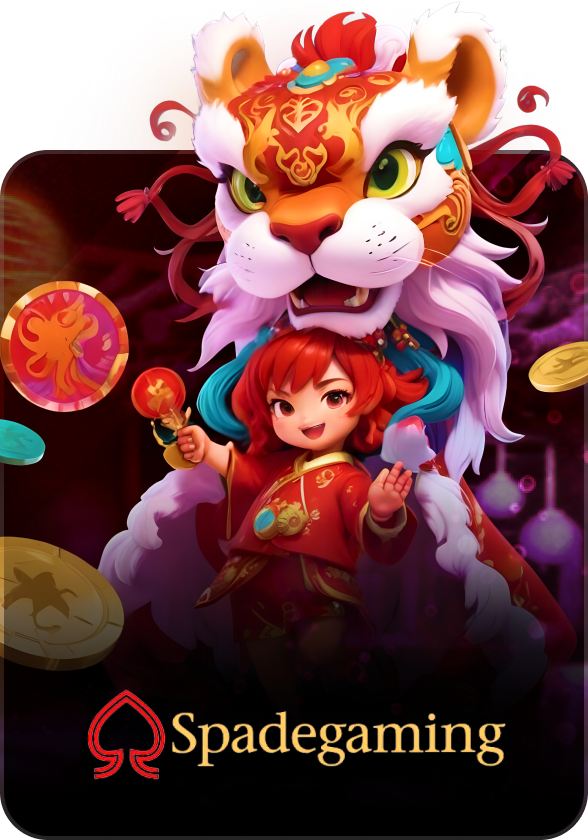NOAH345 เว็บบาคาร่ามาตรฐาน อัปเลเวลความรวย ยิ่งเล่นยิ่งได้
ถ้าชีวิตมันเงียบเหงา เงินในกระเป๋ามันโหรงเหรง มาเจอ NOAH345 เว็บบาคาร่ามาตรฐาน ที่ไม่ได้มาเล่นๆ แต่โคตรจะแจกแบบจุกๆ ฟีลเศรษฐีพันล้านยังต้องเรียกพี่ จะมือใหม่ มือโปร หรือมือซ้าย มือขวา ใครมาก็เก็บแต้มแตกรัวๆ เล่นง่ายแต่จ่ายหนัก แบบนี้บอกเลยว่าขี้โม้ไม่ได้นะ เพราะคนจริงเขาเล่นกัน เกมลื่นๆ กราฟิกดีเว่อร์ สับไพ่ทีสะเทือนยันดาวอังคาร ฝาก-ถอนโคตรไว เหมือนมีเซียนคอยสแตนด์บาย ยิ่งเล่นยิ่งได้ ตื่นมาก็ยิ้มกริ่ม เงินเข้าบัญชีไม่หยุด ถ้ายังลังเลอยู่นี่บอกเลยว่าพลาดโอกาสทอง จะโสด จะมีคู่ก็รวยได้เหมือนกัน อย่ารอช้า จัดเลย
ยิ่งเล่นยิ่งรวย NOAH345 เว็บบาคาร่าที่เกิดมาเพื่อคุณ
ยิ่งเล่นยิ่งรวย NOAH345 เว็บบาคาร่าที่เหมือนถูกดีไซน์มาเพื่อคุณโดยเฉพาะ โคตรของความว้าวที่ไม่ต้องมู แต่เงินก็พุ่งเข้ากระเป๋าแบบจุกๆ สายเกมไม่ว่าจะเด็กเกรียนหรือเซียนระดับตำนานก็ติดใจ บอกเลยเว็บนี้มัน God Tier ไพ่ก็สับไว เกมก็แจกหนัก โปรก็จัดเต็มจนเหมือนแจกฟรี ล้มโต๊ะคาสิโนยังน้อยไปเพราะที่นี่เขายกโต๊ะมาให้คุณฟาดแบบถึงใจ จะหมุน จะจั่ว จะเล่นท่าไหน เงินก็ไหลมาเทมาเหมือนฝนตกหน้าฝาย เล่นไปยิ้มไป ฟีลเศรษฐีจับหัวใจ มาเลยอย่าให้เสีย ถ้าพร้อมจะเป็นตำนานแห่งความรวย คนจริงเขาไม่พลาด เล่นแล้วรวยแน่นอน เหมือนเติมสูตรโกงชีวิตเข้าไปอีกขั้น
มาตรฐานมันต้องแบบนี้ NOAH345 เล่นง่าย รวยไว ได้จริงทุกตา
มาตรฐานมันต้องแบบนี้ NOAH345 เว็บบาคาร่าที่เกิดมาเพื่อบอกโลกว่า เงินมันหาไม่ยาก ถ้ามาเล่นกับเรา จั่วไพ่ทีเหมือนมีเทวดานั่งส่องสเต็ปข้างหลัง กำไรลอยมาแบบจึ้งตาแตก ยิ่งเล่นยิ่งไวเหมือนติดจรวด แถมไม่ต้องกลัวล้ม เพราะเราคือเว็บที่จ่ายหนักทุกตา บอกเลย ได้จริง ได้ชัวร์ ได้ไว ถ้าความเทพมันมีระดับ เว็บนี้คือ Endgame ของวงการ เล่นยังไงก็ได้จริงทุกตา ไพ่ไม่โกง ระบบไม่เอ๋อ โปรไม่จกตา จะถอนสิบ ถอนแสน หรือถอนล้านก็ไม่มีใครมาทำหน้าเบะใส่คุณแน่นอน กราฟิกคือจึ้ง มาตรฐานมันต้องระดับนี้ อย่าให้ใครมาขิงว่ารวยกว่า
เกมบาคาร่าแบบครบๆ มีให้เลือกมากกว่า 20 ค่ายเกม
เกมบาคาร่าแบบครบๆ จัดเต็มกว่า 20 ค่ายเกม ขนกันมาให้เล่นแบบแน่นๆ ที่ NOAH345 จะเลือกค่ายไหนก็เหมือนเลือกอาวุธเทพในเกม RPG แค่กดเข้าไปก็พร้อมตะลุยโลกแห่งความรวย ไพ่จั่วกันมันส์จนมือสั่น ตัวเลือกเยอะจนลายตาแบบเฮ้ย จะเล่นค่ายไหนดีอ่ะ ทุกค่ายคือที่สุด ไม่ว่าจะสายแจกหนัก โบนัสแตกบ่อย หรือฟีลลิ่งแบบไฮโซโต๊ะหรู เรามีหมด จะเซ็กซี่บาคาร่า หรือสายคลาสสิคเรียบหรู งานนี้ครบทุกความต้องการ ความสนุกจึ้งๆ มาพร้อมระบบลื่นปื๊ด ไม่มีสะดุดให้เสียอารมณ์ สับไพ่กันจนกราฟิกแทบลุกเป็นไฟ เล่นยังไงก็ได้ฟีลเศรษฐี ตัวเลือกแน่นกว่าเมนูหมูกระทะ แถมเงินก็ไหลเข้ารัวๆ จะสายไหนก็จัดไปให้สุด แล้วมาพิสูจน์กันว่า ที่สุดของเกมบาคาร่ามันอยู่ที่นี่

อัปเลเวลความฟิน ความรวย กับโปรโมชั่นดีๆ คุ้มๆ
อัปเลเวลความฟิน ความรวย กับโปรโมชั่นดีๆ คุ้มๆ ที่ NOAH345 บอกเลยว่าไม่ได้มาเล่นๆ แต่มาแจกแบบยับ โปรแน่นเหมือนตู้เสื้อผ้าตอนย้ายบ้าน ใครไหวไปก่อนเลย ไม่ว่าจะสายฝากน้อยสายเปย์หนัก โปรนี้จัดให้แบบครบทุกสาย เติมเงินทีเดียวเหมือนได้บัตรผ่านทางสู่คลับเศรษฐี ฟรีโบนัสเด้งเข้ามาแบบจุกๆ เล่นไปยิ้มไป เงินเข้าไวเหมือนติดเทอร์โบ จะโปรแรกเข้า โปรคืนยอด หรือโปรสายฟรีสปิน อะไรก็ว่าไป งานนี้ไม่มีคำว่าเสีย มีแต่ได้กับได้ ความฟินระดับ 10/10 ยิ่งเล่นยิ่งรวย ยิ่งฝากยิ่งแตก เหมือนเปิดประตูโชคชะตาที่เงินร่วงมาจากฟ้า ถ้าคุณพลาดโปรพวกนี้บอกเลยว่า เสียใจยันชาติหน้า รีบเลย มาลองดูแล้วจะรู้ว่าโปรดีๆ แบบนี้มันฟินยังไง
โปรสายฝากครั้งแรก - โบนัส 100%
เติมเงินครั้งแรก รับโบนัสเท่าตัวแบบคูณสอง ฝาก 100 ได้ 200 เล่นง่ายได้จุกๆ ไม่มีอั้น ถ้าคุณเป็นมือใหม่ นี่คือจุดเริ่มต้นแห่งความรวย
โปรคืนยอดเสีย - คืนให้ทุกวัน
โปรฝากประจำ - รับโบนัสเพิ่มทุกยอดฝาก
โปรแนะนำเพื่อน - รับค่าคอมมิชชั่นไม่อั้น
10 เทคนิคจัดเต็ม ทำกำไรจากบาคาร่า NOAH345 แบบมือโปร
- เข้าใจกติกาเกมก่อนลุย ต้องรู้ก่อนว่าเกมมันเล่นยังไง ฝั่งไหนจ่ายเท่าไหร่ จะได้ไม่พลาดจังหวะโกยกำไร
- เลือกห้องให้เป็น อย่ามองข้าม ห้องไหนสถิติไพ่อ่านง่าย จังหวะแจกดี ก็ลุยเลย อย่าไปนั่งมั่วซั่ว
- เดินเงินแบบเซียน ใช้สูตรเดินเงิน เช่น Martingale หรือ Fibonacci จะช่วยเพิ่มโอกาสทำกำไรและคืนทุนไวถ้าพลาด
- อย่าแทงทุกตา เลือกแทงเฉพาะตาที่มั่นใจ 70% ขึ้นไป รอจังหวะดีแล้วซัดเต็ม อย่ามือบอนแทงไปเรื่อย
- จับจังหวะเค้าไพ่ สังเกตเค้าไพ่ เช่น มังกร, ปิงปอง แล้วเล่นตาม อย่าไปสวนกระแสเด็ดขาด
- ตั้งงบประมาณชัดเจน กำหนดเงินทุนต่อวัน แยกเงินที่เล่นได้กับเงินที่เสียได้ อย่าเอาเงินร้อนมาเล่นเด็ดขาด
- เล่นได้ให้พอ ได้กำไรถึงเป้าแล้วหยุดทันที โลภมากลาภหาย อย่าให้อารมณ์พาไป
- หลีกเลี่ยงแทงเสมอ ถึงจ่ายเยอะ แต่โอกาสออกต่ำมาก เหมือนซื้อหวย งบเยอะค่อยลอง อย่าหวังพึ่งมัน
- ฝึกใช้สูตร AI NOAH345 มีสูตรช่วยคำนวณ ลองดูให้คล่อง ใช้ประกอบการตัดสินใจ มีแต่เพิ่มโอกาสชนะ
- เล่นอย่างมีสติ คุมอารมณ์ให้ได้ อย่าหัวร้อน เพราะบาคาร่าไม่ได้มีไว้ให้แก้แค้น มีไว้ให้รวย

เปรียบเทียบระบบ NOAH345 กับเว็บอื่น ๆ ใครเหนือกว่า?
- ความลื่นไหลของระบบ– NOAH345 ลื่นปรื๊ดเหมือนทาไฮสปีดเจล ไม่มีสะดุด ไม่มีค้าง ระหว่างที่บางเว็บยังหมุนติ้วเหมือนอินเทอร์เน็ตยุค 2G
- เกมเยอะกว่า ค่ายครบกว่า– รวมเกมจากกว่า 20 ค่ายดัง ไม่ต้องกระโดดไปเว็บอื่นให้เสียเวลา ในขณะที่บางเว็บมีแค่ไม่กี่ค่าย เล่นไปก็เบื่อ
- โปรจัดหนัก– โปรโมชั่น NOAH345 คือตัวจริง แจกหนัก จัดเต็ม ไม่มีล็อกยูส ต่างจากเว็บอื่นที่โปรดูดีแต่เงื่อนไขยากจนหมดอารมณ์
- ระบบฝาก-ถอนเร็วโคตร– ฝาก-ถอนแบบออโต้ ใน 10 วินาที เงินเข้าปุ๊บ รับกำไรปั๊บ บางเว็บอื่นยังต้องรอเหมือนรอรถไฟฟรีอยู่เลย
- สูตร AI โคตรแม่น– มีสูตรช่วยเล่น คำนวณไว ใช้ได้จริง ไม่ต้องงมสถิติเองแบบเว็บเก่าๆ ที่ยังไม่มีตัวช่วยอะไรเลย
- ความปลอดภัยระดับเทพ– ระบบป้องกันข้อมูลแน่นเปรี๊ยะ ไร้ปัญหาแฮกข้อมูล บางเว็บอื่นยังใช้ระบบที่เจาะง่ายเหมือนล็อกบ้านด้วยเชือก
- บริการ 24 ชม.– ทีมงาน NOAH345 ตอบไว พร้อมดูแลตลอดเวลา ต่างจากบางเว็บที่ถามไปทีเหมือนโยนหินถามทาง รอตอบข้ามวัน
รีวิวตรงไปตรงมา เล่นบาคาร่า NOAH345 คุ้มจริงไหม
- เล่นง่าย โคตรคุ้ม ได้เงินจริง เข้าใจง่าย ไม่ต้องงง ระบบไว แทงไม่กี่ตาก็ได้กำไรกลับมา บอกเลยของเขาดีจริง คุ้มค่าเวลา
- โปรโหดเหมือนแจกฟรี เติมเงินแค่หลักร้อย แต่โบนัสที่ได้คือหลักพัน คุ้มยิ่งกว่าซื้อของลดราคา ใครไม่ลองถือว่าพลาดมาก
- มือใหม่ไม่ต้องกลัว เล่นตามสูตรก็รวยได้ ไม่ต้องคิดเยอะ มีสูตร AI ช่วย กดตามไปเลย แทงยังไงก็ได้เงิน ช่วยชีวิตมือใหม่ไว้ได้เยอะ
- ถอนง่าย ไม่เรื่องเยอะ กดถอนปุ๊บ เงินเข้าปั๊บ ไม่ต้องรอนานเหมือนเว็บอื่น เล่นแล้วถอนจริง ไม่มีโกง ได้เงินครบทุกบาท
- ทีมงานตอบไว เป็นกันเอง มีปัญหาก็ถามไป ตอบไวแบบคนใจถึง ไม่เรื่องมาก ไม่หายหัว เหมือนมีเพื่อนคอยช่วยแก้ปัญหาตลอดเวลา




